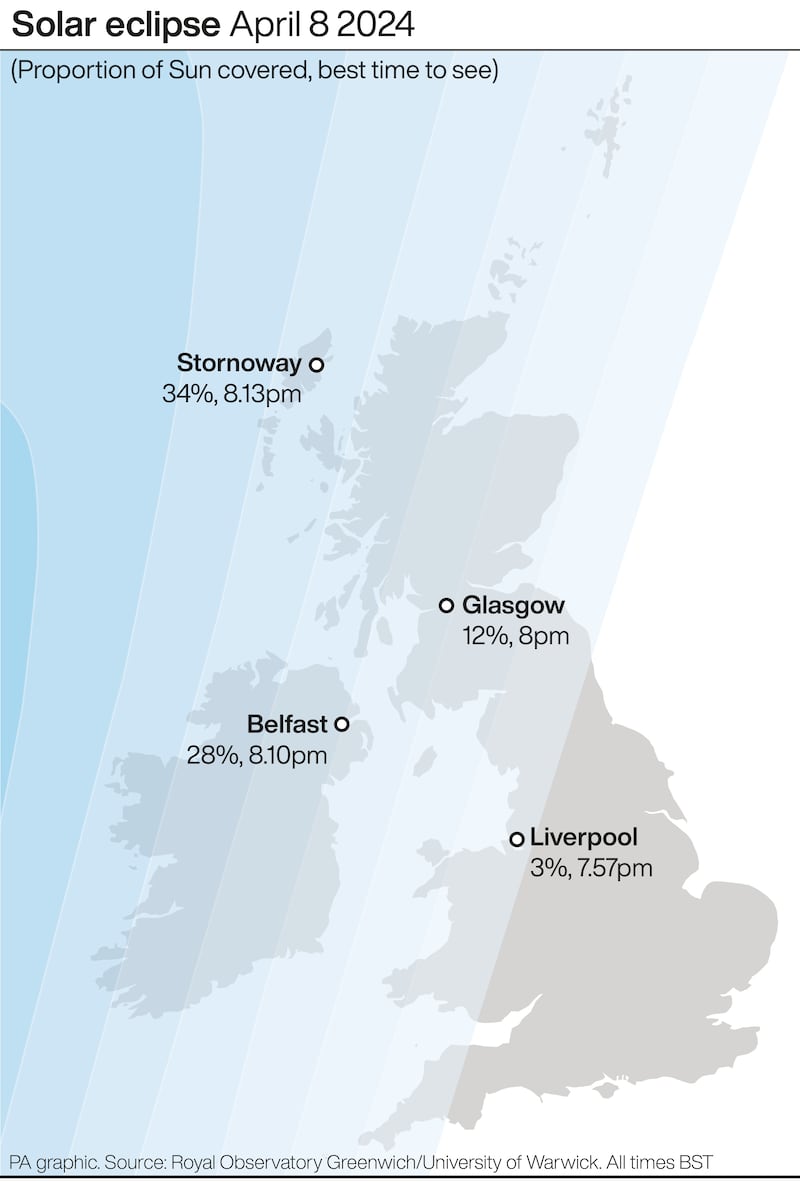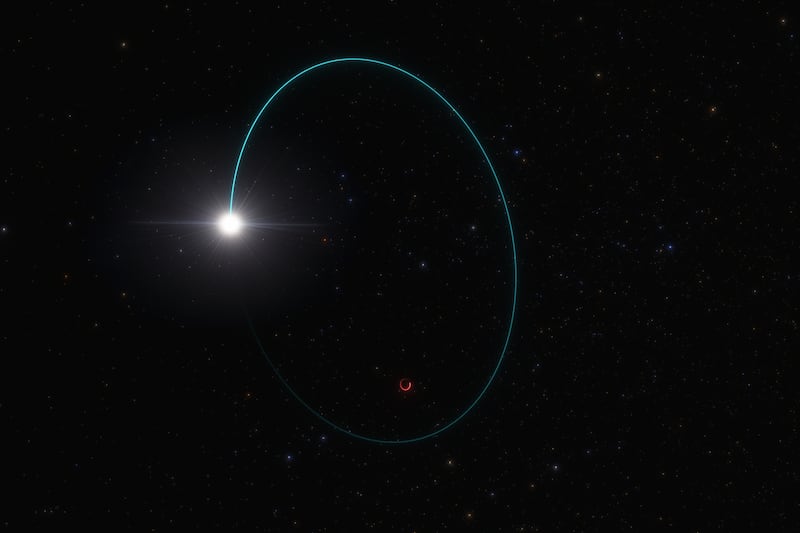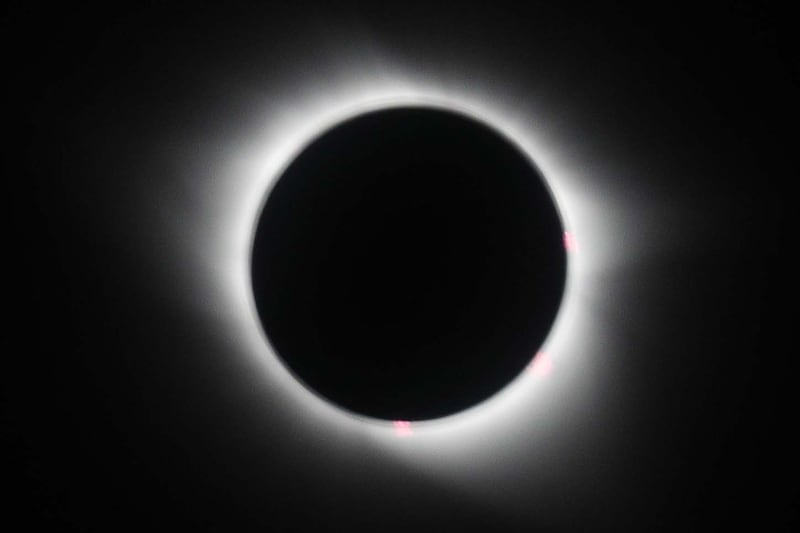A total solar eclipse will plunge much of North America into darkness on Monday, turning the day skies into night.
The cosmic event will see flares of the Sun’s corona appear like a diamond ring in the sky.
As the Earth is plunged into darkness, planets and comets may even be visible to the naked eye, and the eclipse could disrupt communications back on Earth.
A total solar eclipse happens when the Moon completely covers the Sun, and observers are within the darkest part of the Moon’s shadow.

Areas covered by partial shade witness a partial eclipse, and this is what some lucky skygazers might see in the UK on April 8.
The path of the total eclipse will end west of Ireland, but after sunset around 20% to 30% of the Sun will be obscured by the Moon.
Professor Don Pollacco, from the University of Warwick’s Department of Physics, said that from Glasgow about 12% of the Sun will be obscured at around 8pm (BST).
Under clear conditions, people in Edinburgh could see a 6% obscuration.
Dr Edward Bloomer, senior astronomer at the Royal Observatory Greenwich, said the UK is only going to get “a small grazing” of the eclipse in the west and north of the country.
Liverpool will only see a maximum of 3.1% coverage at 7.57pm when the Sun is basically right on the horizon – the window is very small as the start and end times are 7.55pm and 8pm.
Belfast will be treated to more of an eclipse with a maximum of 28.1% coverage at 8.10pm.
However, the Sun will be very low on the horizon, and the window is 7.55pm until 8.14pm.
Stornoway in Scotland will see 33.7% maximum coverage at 8.13pm. The eclipse will start at 7.53pm and end at 8.23pm.
Dr Bloomer said: “I’m afraid the south and the east are out of luck this time around.
“We won’t ourselves get to see anything from the observatory, which we’re a bit sad about.”
Prof Pollacco said: “The totality track ends in the Atlantic hundreds of miles west of Ireland at sunset.
“Going west the obscuration is greater, east less. Either way you will need some eye protection.”
The phenomenon itself will last two hours, with the eclipse starting in North America shortly after 2pm EDT (7pm BST).
The path of totality – meaning where the total solar eclipse will be fully visible – will start shortly after 11am local time in Mazatlan, Mexico.
From Mexico the total eclipse will last 4.5 minutes, and while this does not seem long, the maximum eclipse length possible is about 7-8 minutes.
Prof Pollacco, who is travelling to the US to view the total solar eclipse, said: “Total eclipses of the Sun are amazing and feel quite magical.
“From the right vantage point, you can see the Moon shadow rushing towards you at 1,000 miles an hour as totality approaches.
“When almost obscured as the Sun’s light shines through valleys on the Moon’s limb, you see the famous Baily’s Beads (beads of sunlight emerging from the eclipse shadow) and, when the final valley is lit up, the Diamond Ring (which appears as a faint corona around the Sun, as a glittering ring).
“At this time, turning off the sunlight has effects high up in the Earth’s atmosphere, which may impact communications, and produce the strange shadow bands on the ground – making the ground swirl around as you look at it.”
As always, the usual rules about not looking directly at the Sun apply.
However, experts say the eclipse can be viewed safely through real solar eclipse glasses – not 3D glasses or anything similar.
But the safest, cheapest and arguably the most convenient way to view the event is by pinhole projection – make a hole in a piece of card, hold it under the Sun, and hold a piece of paper behind the card.
Using this method, people should be able to see the shape of the Sun projected on to the paper, taking away the need to look directly at the Sun.
Prof Pollacco warned: “With no protection you will at best damage your eyes, or you could blind yourself.”
Total solar eclipses occur every 18 months but the visibility path of seeing the full total eclipse is only around 80 miles, so if you are not located within that track it will not be visible.
The next total eclipse of the Sun visible from the UK is in 2090.
There is another in 2026 that is visible in northern Spain, tracking up to Iceland.








